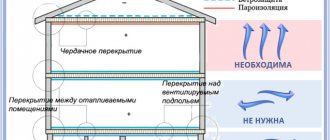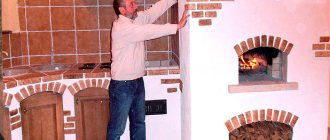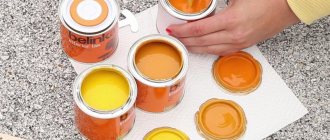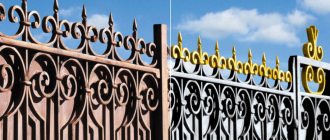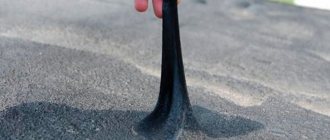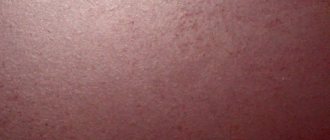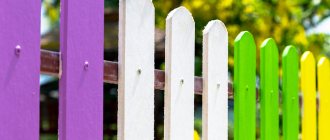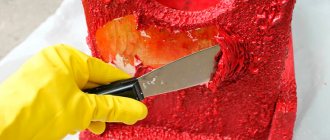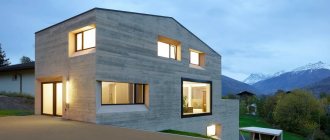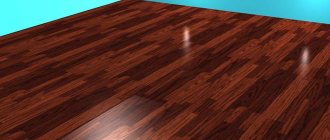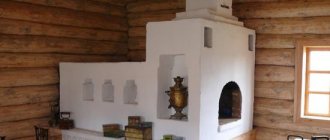Home / Painting tips / Selection rules / Which water-based paint to choose for the ceiling?
In the composition of paints and varnishes, one of the main roles is played by binders and solvents. They affect the paint’s ability to adhere to different surfaces, and also determine the level of resistance of the coating to external influences. Based on the type of solvent, coatings are divided into water- and organic-based ones. Paints of the first group, which can also be called water-dispersion, are more durable, wear-resistant and environmentally friendly, so they are recommended to be chosen for residential premises. All that remains is to figure out which water-based paint to choose for the ceiling and how to paint it correctly.
What are waterborne paints?
Water-based paints are often called water-based paints, while latex and acrylic paints are classified into different categories. But all these compositions are paints of the same type, formed by aqueous dispersion of polymers (latexes) with the addition of various fillers, pigments and other components. A water emulsion is a mixture of very small particles suspended in water. While the paint is in the can, microscopic polymers and additional components do not combine with each other and do not dissolve. Already during the painting process, when the paint is applied to the surface, the water begins to gradually evaporate and the spaces between the particles decrease. After complete compression, a dense film is formed, which, when dried, provides a reliable protective and decorative coating.
Water-based or latex paint should be designated as “water-based”. Depending on the polymer binders, such a coating can be:
- acrylic;
- styrene-acrylic;
- polyvinyl acetate (PVA);
- other types.
Manufacturers can designate aqueous dispersions as acrylic or acrylate - these are also the same concepts.
Preparation
If its surface has already been finished in some way, it needs to be prepared for painting. First you need to get rid of traces of the old finish.
- The whitewash must be well wetted. The soaked layer is removed with a spatula (what are the ways to wash off whitewash from the ceiling?). The cleaned surface is wiped with a damp cloth to remove any remaining composition.
- If a water-based emulsion was used for coloring, sometimes it will be possible to do without removing it. A small area of the coating should be moistened with water, then try to clean it. If the layer adheres thoroughly, you can begin applying the primer. If instability of the coating is detected, it is moistened generously and scraped off with a spatula.
- If moisture-resistant enamel was used for finishing work, removing it will not be easy. You can use special chemical solutions. Another method is mechanical removal of the layer with a grinder or drill with a special attachment. But you will need to use a respirator and goggles or a mask to protect your vision and breathing from the dust that is generated as a result of such work.
- If the surface is covered with wallpaper, remove it: soak the canvas with water and then remove it with a spatula.
It is easier to remove whitewash by wetting it with water.
In any case, after removing the whitewash, the ceiling must be washed with water and detergent. After complete drying, prime and putty with gypsum putty until smooth, which is also called “egg-like.”
How to remove old water emulsion
If the ceiling has already been painted with water-based emulsion, you won’t be able to simply remove it. The procedure depends on how the paint adheres to the ceiling. If it just changed color and you need to renew the ceiling, there are no swelling, cracks or other similar problems, you can get by with a little blood. First, remove the dust (with a cloth and water), dry it, then prime it. After the primer has dried, you can paint it. But once again we draw attention to the fact that this procedure is used only if the water-based emulsion holds well and there are no defects.
Cleaning waterproof emulsion from the ceiling is still a pleasure
If there are cracks or swellings on the surface of the water-based emulsion, it must be cleaned off. There are two ways - dry and wet. Dry means cleaning with sandpaper (manually or using an angle grinder), wet means rinsing off. This method must be used for paint that is not afraid of water. But it is very difficult to remove such paint. If water-based paint holds up well, no tricks help, but there are surface defects and putty is needed, take sandpaper with coarse grain and make the surface rough. After this you can putty. Next - according to technology: we prime and then paint.
Wash off the ceiling painted with water-based emulsion by moistening it twice with plenty of hot water. The water should be almost boiling water - about 70°C. After wetting part of the ceiling, wait 10 minutes, then wet the same area again with hot water. After about five minutes you can remove the paint with a spatula.
Removing old paint is a lengthy process
You can repeat this procedure several times, gradually removing loose paint from the ceiling. Small residues can be sanded off, and then the ceiling can be washed, dried and primed. You can putty and sand over the primer, smoothing out imperfections.
What are the differences and advantages
The types of components added to the acrylic composition determine the following differences between paints:
- specifications;
- price;
- life time;
- resistance to external influences;
- place of application.
Therefore, before purchasing, it is important to clearly determine which surfaces and in which rooms will be painted. In addition, factors of external influence on the coating (ultraviolet radiation, frequency of washing and cleaning, mechanical load, humidity, etc.) are analyzed. And since paint is necessary not only to protect the substrate from negative influences, but also for decoration, the color, texture and degree of matteness of the purchased composition are taken into account.
Among the advantages of water-dispersion paints are:
- durability (due to a high level of wear resistance and withstand high air temperatures);
- long-term preservation of color saturation (the coating does not turn yellow);
- versatility (the ability to apply the composition on many types of surfaces and in different rooms);
- dirt and moisture resistance (the film repels dust and drops of liquid);
- ease of cleaning (even with detergents);
- formation of a breathable coating that allows air to pass through;
- ease of use (dries quickly, easy to apply);
- safety for health and the environment (do not emit harmful volatile organic compounds).
The advantages include cost-effectiveness, which makes the latex composition more accessible, even despite the high cost of some types (for example, acrylic). But here it is necessary to take into account the factor of hiding power (the ability to overlap the contrasting substrate), which will affect the number of coating layers.
The best water-based paints for ceilings
They are made on the basis of acrylic polymers or vinyl acetates. They differ from water-based emulsions in the technology of dissolution in water during the production process. Water-dispersed compositions have less coverage, but the layer formed is highly wear-resistant. The film after drying has a small thickness, but has good moisture resistance.
Lakra
Produced on the basis of acrylic dispersion, recommended for rooms with normal humidity. It has a snow-white color and lays flat on any mineral base. The matte finish hides minor cosmetic surface defects. For work, you can use any hand tool. The thixotropic characteristics are very good: finishing can be done without fear that the emulsion will splash.
Strong adhesion to the base increases the service life of the paint layer, which does not crumble upon tactile contact. Covering characteristics ensure low consumption, and high vapor permeability helps create a cozy microclimate in the house.
Advantages:
- High whiteness;
- Dries quickly;
- Without smell;
- Diluted with water;
- Frost resistance.
Flaws:
- Thorough mixing is required before use.
Tex Universal
Interior paint in a snow-white shade for rooms with normal humidity. The moisture-resistant decorative layer is easy to care for. Thick, easily paints over dark water-based emulsion. The deep matte coating allows air to pass through and does not emit harmful substances at high temperatures. Recommended for finishing work in medical and preschool institutions.
It fits neatly and does not make any difficult demands on the tool used. It is tinted with Tex pastes; after application, the shade becomes slightly lighter after drying. Colored compositions are resistant to solar and artificial ultraviolet radiation. Does not crumble upon tactile influence, does not have the properties of chalk - does not remain on clothing in case of accidental contact.
Advantages:
- No pungent odor;
- Does not splash during application;
- Environmental Safety;
- Does not wash off when wet cleaned.
Flaws:
- Increased consumption.
Finncolor Oasis Interior Plus
Creates a deep matte velvety surface in a snow-white color. Designed for rooms with normal humidity. Thick, with good thixotropic properties. Does not flow from the brush, does not splash with a roller. You can choose the consistency for a pneumatic spray gun: water is used as a diluent.
It is the basis for tinting, which is recommended to be done according to the system of the Finnish company Tikkurila. The colored decorative layer is uniform in its saturation and does not lose its shade under the influence of artificial or solar ultraviolet radiation. When heated, it does not emit harmful substances, which is confirmed by an international environmental certificate.
Advantages:
- Without smell;
- Velvety surface;
- Easy application;
- Good vapor permeability.
Flaws:
- Low wear resistance.
What to look for when choosing
Before choosing waterborne paint for the ceiling, you should determine the room where it will be used. Polyvinyl acetate compounds are not suitable for rooms with high humidity (bathrooms, toilets, kitchens), as well as for areas with poor heating and exposed to low temperatures (dachas, basements, garages). Styrene-acrylic paints, on the contrary, tolerate moisture well, but can fade in sunlight. This material is more suitable for bathrooms, corridors, utility rooms, and storage rooms. An acrylic mixture without mixed polymers is almost universal in scope. It is more expensive than other types, but consumption and coverage are higher, which means less composition is required.
Although polymer paints are quite universal in relation to the surface of application, when purchasing you need to make sure that the paint can be used on a specific substrate (plasterboard, fiberboard, wood, metal, plaster, brick and others).
What primer to use
A primer is necessary for better adhesion of the paint to the surface being painted. It allows you to avoid the appearance of cracks and blisters after the paint dries. If there is no primer, this can happen. You'll have to clean everything off and putty again. Because in order for painting the ceiling with water-based paint to be of high quality, the surface must be well primed.
The base of the primer should match the base paint. Acrylic water-based paint requires the same primer; silicone paint requires a silicone-based primer, etc. Moreover, it is advisable not to save: the quality of this composition determines how smoothly the water-based emulsion will lie on the ceiling.
Acrylic primer for the same water-based paint
There is an economical method of priming: the base paint is diluted with water (1 to 2) and the surfaces are painted with this mixture a couple of times. It's certainly better than nothing, but the primer gives a better grip.
Resistance to external influences
Environmental and human factors directly affect the service life of the selected coating. Durability indicators depend on:
- from light resistance to UV radiation;
- resistance to humidity, fungal infection;
- operational resistance (washing, dry cleaning, impacts, contact with hot objects, household pollution).
When purchasing, you should look on the packaging for special markings or indications that this type of paint is resistant to possible individual external factors. The composition must contain target components, for example light stabilizers or biocidal additives that prevent the spread of microorganisms. The class of paint resistance to washing is taken into account. The standards provide the following designations:
- class 1 (intensive repeated washing with detergents without abrasive small particles);
- class 2 (softer cleaning with non-abrasive detergents);
- class 3 (exceptionally easy cleaning with a foam sponge without detergents).
The temperature in the room also plays an important role when choosing. Water-dispersion paints are recommended to be used within +5…+30 degrees Celsius.
Storage and use conditions
It must be remembered that water-based ceiling paint should be stored in a room where the temperature is not lower than zero degrees. The quality of frozen paint may noticeably deteriorate. Don't neglect safety precautions. Paint is a flammable material and should never be stored near open flame sources.
Painting work should be carried out at air temperatures above +5 degrees. Otherwise, the paint may thicken greatly and it will be difficult to apply it to the ceiling in an even layer.
Color and hiding power
Indicators such as hiding power and paint color are influenced by the pigments that make up the paintwork material. Most ceiling coverings are available in a universal white color, which also has the highest ability to cover a contrasting substrate. Application of high-quality water-dispersed snow-white paint is most often limited to 1–2 thin layers.
When a composition with a certain shade is required, tinting is used. Some paint and varnish sales departments have specialized tinting services that carry out the process automatically. Also, many manufacturers supplement their products with color mixing cards, allowing you to do everything manually. In this case, pigment paste or color paint is added to the white color. It is important that the color paste concentration does not exceed 10% for interior compositions, otherwise the properties of the coating will be impaired.
When buying paint, it is advisable to pay attention to the presence of a designation on the packaging about the possibility of tinting or clarify this nuance with the seller. It is also taken into account that certain colors and their shades (yellow, red, lilac, purple) have a low level of surface coverage. This will directly affect paint consumption, since to paint a dark substrate, instead of 1-2, 3-4 layers of coating will be required. An alternative solution is to tint the primer previously applied to the surface in the most similar color.
Manufacturers
To decide what to paint the ceiling in an apartment with, you should choose not only the type of mixture, but also a trusted manufacturer. There are many different paint compositions on the construction market, but not all of them are popular. We will describe the most popular manufacturers of coloring mixtures.
Caparol
How and how to paint a plasterboard ceiling with your own hands
German ceiling paint from the Caparol brand is an environmentally friendly water-soluble mixture. They do not contain plasticizers or organic solvents.
Advice! To finish the ceiling, it is recommended to use the Premium Clean composition from Caparol with high moisture resistance.
Features of Caparol paints:
- The price of high-quality German paints is quite high, but this does not diminish their popularity.
- The long service life compensates for the high cost.
- Resistance to mechanical stress and abrasion.
- Can be washed using any detergent.
Tikkurila
Don't know which ceiling paint to choose? Pay attention to Tikkurila brand products. This Finnish company has been producing paints and varnishes since 1862. The company's product range includes many types of ceiling paints suitable for different surfaces. Their advantages:
- low material consumption (120 grams per square meter);
- good hiding power;
- the presence of antiseptic components;
- suitable for places with high humidity;
- rich color palette;
- high performance characteristics;
- Tikkurila paints are characterized by richness and brightness of shades;
- easy to apply, adheres well to the base;
- setting speed - 35 minutes, and complete drying - up to three hours;
- environmentally friendly, no pungent odor.
Important! The only drawback of Tikkurila coloring mixtures is their high price. But this pays off with a long service life.
Sniezka
Several companies located in different countries are united under this brand. The main office is located in Poland. Painting the ceiling with Snezka is beneficial for many reasons:
- the coloring compositions of this brand are hypoallergenic and environmentally friendly;
- the coating is resistant to temperature changes;
- moisture resistant;
- the surface under the paint layer breathes;
- allowed to wash;
- abrasion resistance.
Important! The most affordable coloring composition in terms of price is Ultra Bele on an acrylic basis. But the matte finish does not have an impressive service life.
Dulux
The products of the British brand Dulux have proven themselves well. The company's main office is today located in the Netherlands. Dulux factories produce alkyd and water-based paints. The compositions differ:
- ease and speed of application;
- drying speed;
- high quality;
- no pungent odor;
- good hiding power;
- hydrophobic properties.
Dulux coloring mixtures are allowed to be used for painting ceilings in the kitchen, bathroom or bathroom. The coating hides small cracks and other base defects well. The company’s assortment also includes a unique coloring mixture that will not allow you to leave a single area unpainted. Its name is “Magic White”. During application, the composition has a pinkish tint, and after drying it becomes pure white. Thanks to this property, you can paint all areas of the surface and conclude that the coating has completely dried.
In addition, the plant produces a composition with silver ions intended for children's rooms. It protects the surface from damage by microorganisms and purifies the air. Consumption is 170 g/m². And the complete drying time reaches 6 hours.
Decorative properties
In addition to paint color, factors affecting the appearance of the coating are:
- degree of gloss;
- light reflection;
- texture (its density, presence of special effects).
On labels in most cases there are indications of the degree of gloss, depending on which the paints are divided:
- to glossy,
- semi-gloss,
- semi-matte,
- matte,
- completely matte.
Moreover, even the saturation of gloss and matte may differ, and the reflection of light from different degrees of gloss occurs at different angles. Glossy paints do not scatter light particles as chaotically as matte paints. Manufacturers can also supplement each of the coatings with various special effects (rough texture, metallic sheen, etc.).
If the difficulty of choosing depends on gloss or matte, it is recommended to analyze the parameters of the room and the ceiling substrate. Glossy surfaces are brighter, make the room lighter (and lower), give a boost of energy and practically do not get dirty. But if the ceiling is poorly leveled or there are defects on it, gloss will only emphasize these features. Matte compositions can cope with this disadvantage, visually expanding the room, bringing calm to the atmosphere, and gently scattering light. Their disadvantage is a higher degree of contamination and difficulty in washing.
How much paint will you need?
On the container with the product, as a rule, the paint consumption per square meter is indicated. On average it is 150-250 grams/m2. If you need to tint paint, always prepare a little more solution than you need according to preliminary calculations. Indeed, if there is a shortage of material, it will be very difficult to get exactly the same shade again.
Additional factors
When choosing paint, some additional features of the material are taken into account, which should include:
- consumption (surface area that can be painted in 1 layer using 1 liter of coating);
- drying speed (full curing takes from 1 week to 1 month);
- viscosity (painting the ceiling with very liquid compounds is accompanied by a high level of complexity, staining of clothes, walls, floors);
- manufacturer and place of purchase (the quality of the product and the likelihood of purchasing a counterfeit may directly depend on these indicators).
Even the highest quality composition, selected in all respects, will not perform at its best if the correct painting sequence is violated. It is important to prepare any surface for paint application, namely clean it, apply priming and leveling putty. It is recommended, if possible, to choose preparatory and coloring materials from the range of one manufacturer. It is also mandatory to strictly follow the instructions for the paint.
If you select water-based ceiling paint that matches the surface being painted and the room, the coating will last for many years without significant damage or deterioration in its appearance. And even when the price of the product is the decisive factor, it is important to remember that, having saved, you can very soon be faced with the need to repaint the ceiling.
The best water-based paints for ceilings
After drying, water-based paint for walls and ceilings forms a breathable film, helping to create a comfortable indoor microclimate. Distinctive features: good adhesion to the base, high drying speed, uniform application. Easily tinted, has no unpleasant odor. The disadvantage of water-based emulsion from most manufacturers is low water resistance.
Tikkurila Euro Power 7
A base developed by specialists from a Finnish company for high-use premises. Recommended for painting walls and ceilings in hallways, corridors, and children's rooms. After drying, it forms a paint layer that can be washed using household chemicals that do not contain abrasive substances. The tests carried out demonstrated high wear resistance - the finish can withstand up to 10 thousand passes with a brush.
It can be tinted in any shade, which is preserved for 15 years. Intense colors do not lose their saturation under the influence of solar ultraviolet radiation. It is pleasant to work with the composition: the water-based emulsion is odorless and applies evenly to smooth and rough surfaces. Viscosity allows application with a pneumatic spray gun. The recipe does not use harmful substances - it can be used in children's and medical institutions.
Advantages:
- Good vapor permeability;
- Freshness is maintained for a long time;
- Dries in 2 hours;
- Economical.
Flaws:
- Not detected.
Washable matte ceiling paint has good adhesion not only to mineral substrates. The composition can be used to paint wood fiber and particle boards. This makes Euro Power the best choice for repairs in the country house or garden pavilion.
Magic of the rainbow M-2
It has a deep velvety shine and a snow-white hue. Designed for dry rooms, recommended for living room, bedroom, office. Easy to apply with a roller or brush, after drying it forms a homogeneous film with good vapor permeability. It contains no organic solvents and does not emit harmful substances during operation.
The main advantages are low price and low consumption. The material can be recommended for objects where surfaces quickly become dirty. The coating is not intended for wet cleaning, but the cost allows for annual repairs to update the interior. An uncompromising choice for preschool and educational institutions where painting of ceilings is carried out regularly.
Advantages:
- Drying time 1 hour;
- Does not flow when working with a brush;
- Easily tinted;
- High adhesion to cement plasters.
Flaws:
- Low water resistance.
Russian patterns
The paint for the ceiling in the apartment was created on the basis of polyacrylic dispersion and is distinguished by its bright whiteness. Lays evenly on plastered, concrete, plasterboard surfaces. You can work with any hand tool, pneumatic sprayer. Dries within 1 hour and becomes noticeably lighter. It has a noble, deep-matte shine and can be tinted in any shade.
The solvent is water, this makes it easy to remove drops of emulsion from the floor covering or washable wallpaper. It has no unpleasant odor and forms a decorative film that is permeable to air. There is no emission of organic substances during operation. When applied with a brush, no streaks remain.
Advantages:
- Thick consistency;
- Good hiding power;
- Cost-effective;
- High degree of adhesion.
Flaws:
- To use the spray gun, it must be diluted with water.
Glossy and matte finish
Water-based glossy ceiling paint not only looks beautiful, but also has a number of functional advantages:
- water resistance - the glossy surface does not retain moisture, it is easily washed off from dirt;
- strength - acrylic resins form a film on the surface of the material that is resistant to damage;
- economical - a liter of paint is enough for 7-12 square meters of ceiling;
- environmental friendliness - glossy ceiling paint does not contain harmful impurities and is easily recycled.
On the other hand, matte water-based ceiling paint also has its own advantages. This coating ensures no glare and also masks minor surface defects.
